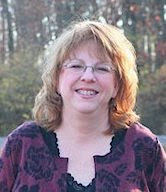Ahhh...I've had my afternoon nap and now feel ready to face the rest of the day at the Surrey International Writers' Conference How do you convey important information - for example in a legal thriller, or medical thriller, or historical? You have an interesting character telling another character who needs to know! WHEN THEY NEED TO KNOW IT. (Where is that fire escape? It's right there! Now go!) That's all for now. I'll post some interesting links provided by presenters, as well as book recommendations from presenters next week. In the meantime, stop reading blogs and go write!
Reflect on This: At our forum party last night I was talking to Rachel Vater, agent extraordinaire. I asked her how many new clients she takes on each year. The answer, 8-10. 8-10 clients ONLY in a year. So, if a typical agent is getting 500 - 1,000 queries a month, 6,000 - 12,000 queries a year, and out of that hoard, they are only signing 8-10 new clients, imagine the chances of any ONE agent selecting your query, and then manuscript out of their pile. This just highlights that not only does your novel need to be well written, and you need to develop a really wonderful query letter, but that you need to really persevere when querying agents. In order to be selected by a particular agent, you need to be in their top 10 picks of the entire year. But if not this agent, then another. It may just be that they have their picks for the year.
Maybe this doesn't come as a revelation for anyone else, but for me it really highlighted just how competitive this business is.
How was the forum party? Wonderful, as always. Thank you to Kathy Chung and everyone else who helped organize the event. Diana Gabaldon read a selection from a story she and her son, Sam, are working on for an anthology. If the snippet is any indication, Sam's writing is as entertaining as his mother's and the anthology will be well worth buying. Michael Slade also read from his current book, Crucified. This is his take on a DaVinci Code style book, with puzzles and locked rooms. I loved hearing about his research, particularly on crucifixion. I won't describe it here. Let's just say Michael is a bit of a gory writer. Not my thing, but he is a riveting oral story teller and I always enjoy listening to him talk.
So, what did I learn today?
Donald Maass - Fear in Fiction:
This morning I went to Don Maass's Fear in Fiction session. Don's classes are wonderful because, no matter what his topic, he always makes you come up with new ideas to make your book stronger. Perhaps he ought to switch to weekly podcasts.
As always, Don offered an exercise. These are always more effective when your sitting in a room and have nothing else to do but sit there and think about his questions (he leaves VERY LARGE empty periods of time for you to think about what he's just asked). Even if you don't have an immediate answer, after about 5 or 10 minutes of sitting there thinking about his questions, something always comes (testament to the power of boring your muse into action). So, the exercise today is to answer the questions: What is the most unlikely or improbably event in your story? Why wouldn't this happen in the real world? What makes this event unbelievable? Now, ask yourself this another 20 times.
Once you have your list of 20 reasons why the event wouldn't happen, or your antagonist couldn't or wouldn't do what he did, start finding explanations or strategies to get around these obstacles.
Don's other advice: Make your monsters human. Villains who are so evil that they seem to be caricatures of evilness are not scary - they are unbelievable. Make them human - give them human wants, desires, opinions, daily activities and they seem more real and, ultimately, scarier.
Show and Tell, by Robert Sawyer
I attended this workshop not because "show, don't tell" is a new concept, but because the description included a promised discussion of when telling can be used effectively. Mr. Sawyer provided many good examples (an entire handout) of converting "telling" into "showing". Always good to get new ideas. Here is a short list (without discussion) of when telling can be effective:
Sunday, October 26, 2008
Surrey International Writers' Conference - Day Four
Posted by Jenny Meyer Graman at 4:57 PM
Labels: Surrey International Writers' Conference, writing advice
Subscribe to:
Post Comments (Atom)



4 comments:
Jenny,
Sounds like it was a great conference! Look forward to hearing more. :)
Jen
Jenny,
What a great conference you had! Thanks so much for sharing.
Rhonddalyn
Jen and Rhonddalyn,
Thanks for reading! I'm working on my detailed notes now andn will put them up on the forum sometime today.
Next year we need to see both of you there!
Jenny,
Thank you so much for everything this weekend. It was so nice to finally meet you.
I don't think I would have felt nearly as comfortable if I hadn't spent most of Friday night hanging on the couch with you!
Post a Comment